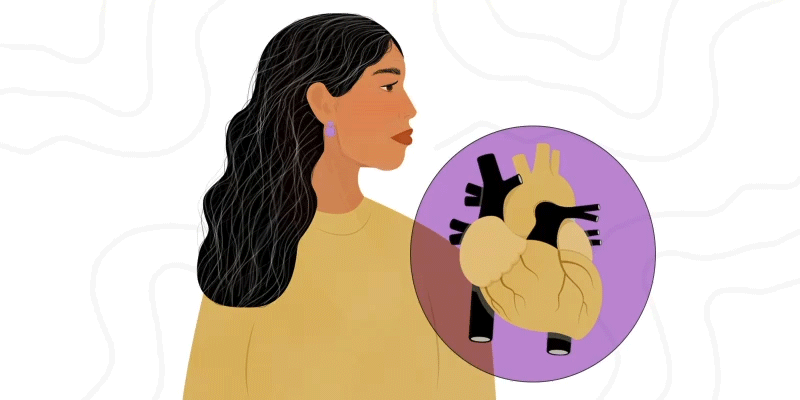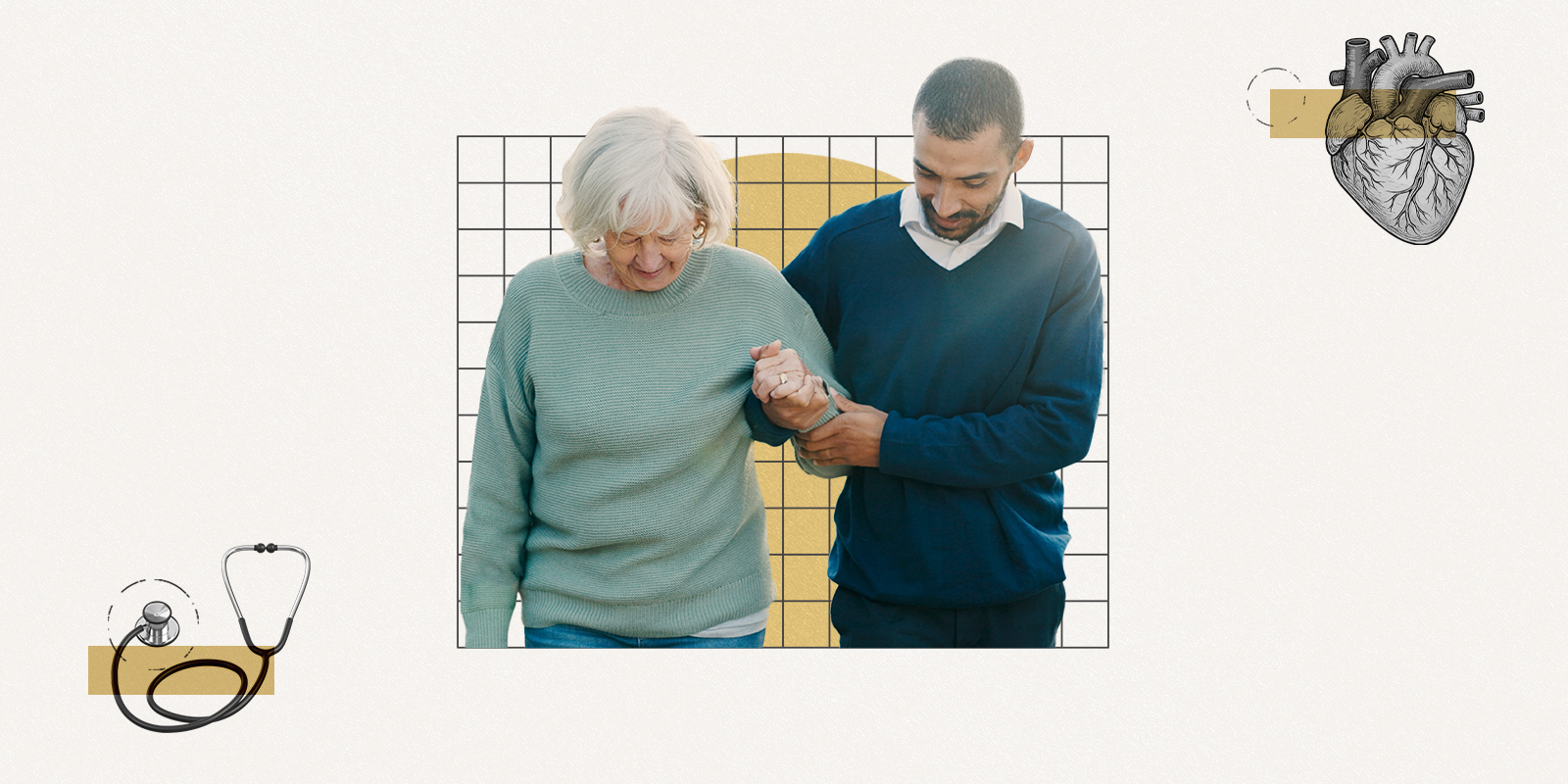Many heart disease symptoms that are typically associated with menopause actually begin before that milestone is reached – during perimenopause. This is the stage, generally in women’s 40s, when they are transitioning into menopause.
“There are sudden increases in heart disease risks during this transition, right before a woman’s estrogen significantly declines,” said Nanette Santoro, MD, professor and E. Stewart Taylor Chair in the Department of Obstetrics and Gynecology at the University of Colorado School of Medicine. “During menopause, the rate of these increased risks starts to slow down. So, we think it may be the transition into menopause itself that is causing heart disease risks.”
This finding is relatively new. It’s why Santoro, along with the American Heart Association (AHA), emphasizes that women and their providers need to pay more attention to symptoms of heart disease at midlife, when they first begin perimenopause. During this time, women’s menstrual cycles begin changing.
The exact age of this transition can vary with lifestyle and genetic factors. Perimenopause lasts an average of seven years before a woman has her final menstrual cycle and enters menopause.
“We tend to think nothing is happening until after menopause because we’re very wedded to the concept that menopause is related to this abrupt loss of estrogen that’s horrendous, but this stuff is going on before that,” Santoro said.
Many risks can increase during perimenopause
Heart disease, also called cardiovascular disease, includes a range of problems that affect the heart and blood vessels and can lead to heart attacks, stroke and death.
Perimenopause is a physiologically stressful time when estrogen levels are rising and falling and symptoms such as hot flashes, vaginal dryness and mood changes begin to occur. These can cause stressors that seem to increase heart disease risks, although experts don’t know exactly how they do so.
Among the risks that often increase just before and during the transition into menopause are:
- A steeper rise in cholesterol
- A steeper rise in blood pressure
- An increased rate of accumulation of plaque in the carotid arteries, which are the main blood vessels that supply blood to the brain
- A more rapid rate of weight gain and an increase in body fat, especially around the waist
- Worsening sleep problems (for some)
- A greater risk for depression
Even though heart disease risks can begin in perimenopause, actual heart disease usually doesn’t develop until many years later.
“It takes a while for those risks to turn into events and then, at about age 70, women start to surpass men in their rate of having heart attacks,” Santoro said. “They also have worse outcomes.”
Unfortunately, not only has there been less research into preventing heart disease in women, but the same prevention techniques that work in men may not work for women. For example, inflammation, depression and having smaller blood vessels than men have all been linked to heart disease in women. But more research needs to happen in these areas, she said.
Steps to reduce heart disease risks
The main way women can reduce their risk is through aerobic exercise, and it doesn’t need to be excessive. The AHA recommends 150 minutes per week of moderate exercise, which can include walking at a brisk pace.
“At about age 70, women start to surpass men in their rate of having heart attacks. They also have worse outcomes.” – Nanette Santoro, MD
Other key lifestyle factors are controlling weight and following a heart-healthy diet. The latter includes eating a wide variety of fruits and vegetables, whole grains and healthy proteins such as nuts, legumes and fish while minimizing sugar, salt, processed foods and alcohol. Stopping smoking, managing blood pressure and cholesterol, and getting enough sleep are also vital.
“Lack of sleep is very costly for women,” Santoro says. “Women in general tend to be lighter sleepers, and sleep quality tends to get worse with age. We know that people who sleep too little are more prone to heart disease.”
Whether or not hormone replacement therapy with estrogen in menopausal women reduces heart disease risk remains unclear, although several studies have not shown a benefit.
Studies suggest little to no hormone effect on heart health
A large, national study conducted in 2014, for which Santoro was an investigator, did not find a difference in risk factors between women who received estrogen therapy compared to those who did not. These measures included hardening of the arteries, high blood pressure and high cholesterol. A follow-up study published this year further confirmed those findings.
“Women in general tend to be lighter sleepers, and sleep quality tends to get worse with age. We know that people who sleep too little are more prone to heart disease.” – Nanette Santoro, MD
Another national study among postmenopausal women, however, found that estrogen therapy slowed the rate of plaque accumulation that leads to hardening of the arteries in the neck.
“If there’s an effect of estrogen alone, it’s probably pretty small, so it’s kind of mysterious,” Santoro said. She also points to the Women’s Health Initiative study, which found that estrogen therapy did not prevent heart disease in post-menopausal women.
But there may be another way that estrogen therapy could potentially lower heart disease risk. There is some evidence that women with severe hot flashes may have a higher chance of developing the disease later in life and could benefit from taking estrogen.
Experts do not recommend that women without menopausal symptoms take estrogen for prevention. However, those with severe hot flashes may benefit from more intensive monitoring for heart disease symptoms and better management of risk factors, Santoro said.
Alternatives to hormone therapy may help treat hot flashes
Because estrogen therapy (when given with a progestin) can be linked to breast cancer risk, only a small minority of women now take it. That is too bad for women who may benefit from its ability to control hot flashes, Santoro said.
Fortunately, new types of drugs that may offer relief without estrogen’s side effects are now available, with more on the way. They work by blocking signals in the brain that cause hot flashes, and they appear to be quite effective in many women, Santoro said. The U.S. Food and Drug Administration has approved the first of these drugs, called Veozah (fezolinetant).
Because of the heart disease risks associated with perimenopause, Santoro is committed to making sure all women undergo a midlife health assessment.
“These problems aren’t visible at this age,” she said. “I see patients who have high blood pressure for the first time in their lives, and they go right into denial. But managing risk factors in perimenopause will help prevent heart disease later, and we have great ways to do it.”
Guest contributor: Carrie Printz is a Denver-based health sciences writer.


.png)

